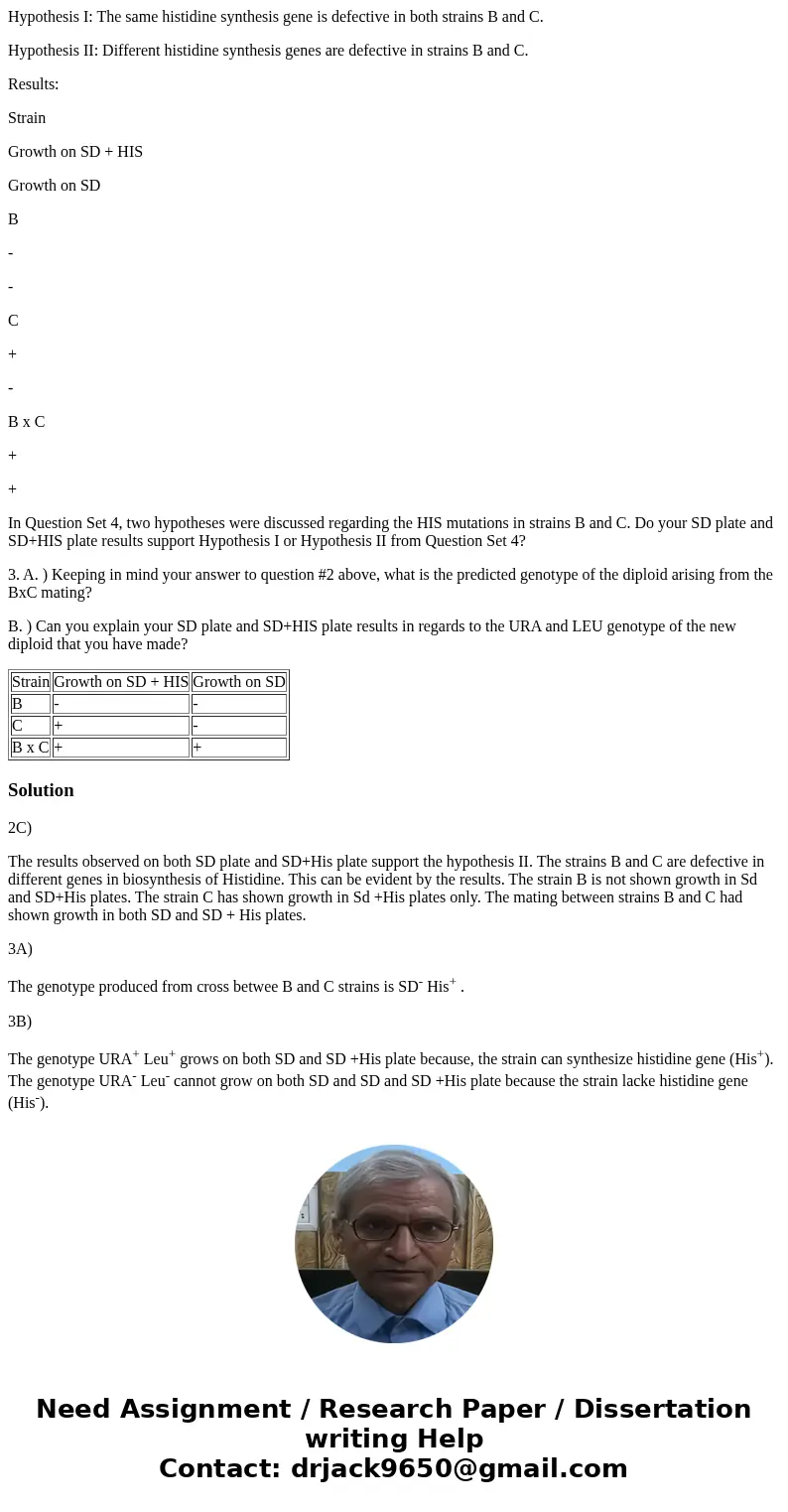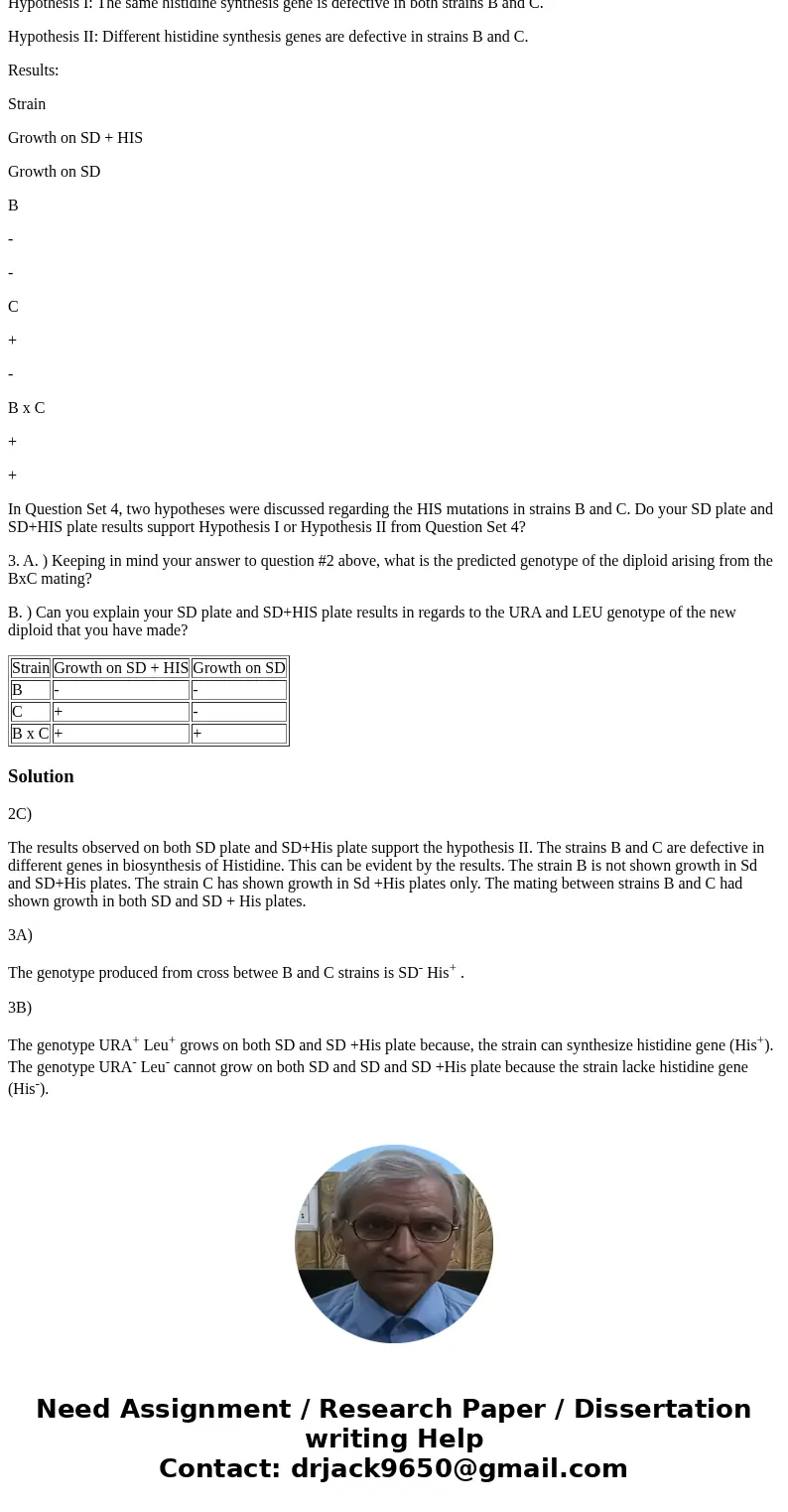Hypothesis I The same histidine synthesis gene is defective
Hypothesis I: The same histidine synthesis gene is defective in both strains B and C.
Hypothesis II: Different histidine synthesis genes are defective in strains B and C.
Results:
Strain
Growth on SD + HIS
Growth on SD
B
-
-
C
+
-
B x C
+
+
In Question Set 4, two hypotheses were discussed regarding the HIS mutations in strains B and C. Do your SD plate and SD+HIS plate results support Hypothesis I or Hypothesis II from Question Set 4?
3. A. ) Keeping in mind your answer to question #2 above, what is the predicted genotype of the diploid arising from the BxC mating?
B. ) Can you explain your SD plate and SD+HIS plate results in regards to the URA and LEU genotype of the new diploid that you have made?
| Strain | Growth on SD + HIS | Growth on SD |
| B | - | - |
| C | + | - |
| B x C | + | + |
Solution
2C)
The results observed on both SD plate and SD+His plate support the hypothesis II. The strains B and C are defective in different genes in biosynthesis of Histidine. This can be evident by the results. The strain B is not shown growth in Sd and SD+His plates. The strain C has shown growth in Sd +His plates only. The mating between strains B and C had shown growth in both SD and SD + His plates.
3A)
The genotype produced from cross betwee B and C strains is SD- His+ .
3B)
The genotype URA+ Leu+ grows on both SD and SD +His plate because, the strain can synthesize histidine gene (His+). The genotype URA- Leu- cannot grow on both SD and SD and SD +His plate because the strain lacke histidine gene (His-).


 Homework Sourse
Homework Sourse